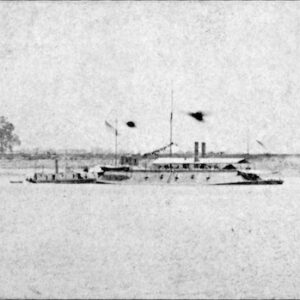Tag: Natchez MS
Wikipedia says: Natchez is the county seat and only city of Adams County, Mississippi, United States. Located on the Mississippi River across from Vidalia in Concordia Parish, Louisiana, Natchez was a prominent city in the antebellum years, a center of cotton planters and Mississippi River trade.
Natchez is some 90 miles (140 km) southwest of Jackson, the capital of Mississippi, which is located near the center of the state. It is approximately 85 miles (137 km) north of Baton Rouge, Louisiana, located on the lower Mississippi River. Natchez is the 25th-largest city in the state. The city was named for the Natchez tribe of Native Americans, who with their ancestors, inhabited much of the area from the 8th century AD through the French colonial period.
Established by French colonists in 1716, Natchez is one of the oldest and most important European settlements in the lower Mississippi River Valley. After the French lost the French and Indian War (Seven Years’ War), they ceded Natchez and near territory to Great Britain in the Treaty of Paris of 1763. (It later traded other territory east of the Mississippi River with Great Britain, which expanded what it called West Florida). The British Crown bestowed land grants in this territory to officers who had served with distinction in the war. These officers came mostly from the colonies of New York, New Jersey, and Pennsylvania. They established plantations and brought their upper class style of living to the area.
Beginning 1779, the area was under Spanish colonial rule. After defeat in the American Revolutionary War, Great Britain ceded the territory to the United States under the terms of the Treaty of Paris (1783). Spain was not a party to the treaty, and it was their forces who had taken Natchez from British troops. Although Spain had been allied with the American colonists, they were more interested in advancing their power at the expense of Britain. Once the war was over, they were not inclined to give up that which they had acquired by force.
In 1797 Major Andrew Ellicott of the United States marched to the highest ridge in the young town of Natchez, set up camp, and raised the first American Flag claiming Natchez and all former Spanish lands east of the Mississippi above the 31st parallel for the United States.
After the United States acquired this area from the Spanish, the city served as the capital of the Mississippi Territory and then of the state of Mississippi. It predates Jackson by more than a century; the latter replaced Natchez as the capital in 1822, as it was more centrally located in the developing state. The strategic location of Natchez, on a bluff overlooking the Mississippi River, ensured that it would be a pivotal center of trade, commerce, and the interchange of ethnic Native American, European, and African cultures in the region; it held this position for two centuries after its founding.
In U.S. history, Natchez is recognized particularly for its role in the development of the Old Southwest during the first half of the 19th century. It was the southern terminus of the historic Natchez Trace, with the northern terminus being Nashville, Tennessee. After unloading their cargoes in Natchez or New Orleans, many pilots and crew of flatboats and keelboats traveled by the Trace overland to their homes in the Ohio River Valley. (Given the strong current of the Mississippi River, it was not until steam-powered vessels were developed in the 1820s that travel northward on the river could be accomplished by large boats.) The Natchez Trace also played an important role during the War of 1812. Today the modern Natchez Trace Parkway, which commemorates this route, still has its southern terminus in Natchez.
In the middle of the nineteenth century, the city attracted wealthy Southern planters as residents, who built mansions to fit their ambitions. Their plantations were vast tracts of land in the surrounding lowlands along the river fronts of Mississippi and Louisiana, where they grew large commodity crops of cotton and sugarcane using slave labor. Natchez became the principal port from which these crops were exported, both upriver to Northern cities and downriver to New Orleans, where much of the cargo was exported to Europe. Many of the mansions built by planters before 1860 survive and form a major part of the city’s architecture and identity. Agriculture remained the primary economic base for the region until well into the twentieth century.
During the American Civil War Natchez was surrendered by Confederate forces without a fight in September 1862. Following the Union victory at the Battle of Vicksburg in July 1863, many refugees, including former slaves, freed by the Emancipation Proclamation, began moving into Natchez and the surrounding countryside. The Union Army officers claimed to be short on resources and unable to provide for the refugees. The Army planned to address the situation with a mixture of paid labor for freed slaves on government leased plantations, the enlistment of able bodied males who were willing to fight in the Union Army and the establishment of refugee camps where former slaves could be provided with education. However, as the war continued, the plan was never effectively implemented and the leased plantations were crowded, poorly managed and frequently raided by Confederate troops who controlled the surrounding territory. Hundreds of people living in Natchez, including many former slaves and refugees, died of hunger, disease, overwork or were killed in the fighting during this period.
Showing all 2 resultsSorted by latest
-

Image ID: AZFI
$1.99 This product has multiple variants. The options may be chosen on the product page -

Image ID: APJZ
$3.99